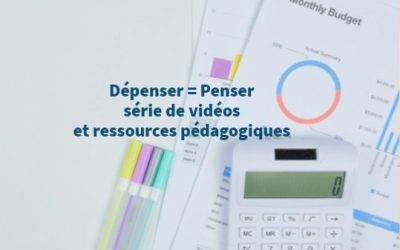Aperçu
Dans cette leçon, les apprenants de langue française développeront leur compétences linguistiques orales à l’aide de vidéos à fort intérêt, liées à la carrière et basées sur des enquêtes.
Overview
In this lesson, French language learners will strengthen their oral comprehension skills with the help of high-interest, career connected and inquiry-based videos.
NB Curricular Connections
Subject – Middle level block Early French Immersion Language Arts (L’art langagier en immersion française)
CEFR ZONE A2-B+
Volet: Communication Orale
- Grandes Ideés: Compréhension Orale. Descripteurs de compétences: Démontrer la compréhension de différents textes oraux sur une variété de sujets en utilisant des stratégies de compréhension.
- Grandes Idées: Production et interaction orales. Descripteurs de compétences: Communiquer de l’information, des connaissances, des idées et des opinions sur une variété de sujets à l’aide de plusieurs types de présentations ou d’échanges. Descripteurs de compétences: Utiliser un langage oral avec une précision, une aisance, une cohérence, ainsi qu’un vocabulaire plus sophistiqué lors de discussions sur une variété de sujets
- Grandes Idées: Identités Multilingues et appréciation culturelle. Descripteurs de compétences: Décrire comment les langues et les cultures façonnent l’identité en évolution et les visions du monde des apprenants.
Subject – Grade 8 Personal Wellness (Mieux-être)
Volet: Apprentissage relié à la carrière
- Grandes Idées: Réfléchir aux parcours professionnels potentiels. Decripteurs de compétences: Montrer une vision élairée de l’avenir selon ses intérêts, ses préférences, ses valeurs et ses capacités
What You’ll Need
- Access to the IDÉLLO online platform (free account for all educators in New Brunswick) and the video series Là est la question! | Idéllo (idello.org)
- List of 22 short videos from this series (season 4) that can be used with this same learning activity (see attachment)
- Copies of the graphic organizer for your learners – fiche reproductive pour les étudiants Là est la question !? (attachment)
Instructions
Minds On:
- Access prior knowledge of your learners on the concept of “compétences” (skills). Explain that Habilités + Connaissances = Compétences. Une habilité c’est la capacité requise pour accomplir une tâche. La connaissance est acquiert au contact de l’information. This video from the Labour Market Council can help deepen understanding of the concept of compétences/skills.
- Further expand the discussion, by elaborating that many career paths require certain skills and developing and maintaining these skills can be a life-long process. Use language learning as an example and refer to the Common European Framework of Reference scale as a helpful tool for all language learners.
- Ask learners if there are any advantages with having the skill to communicate in both official languages in Canada? “En quoi la compétence de communiquer dans les deux langues officielles du Canada pourrait-elle être un advantage? Note the ideas shared on chart paper.
- Next, as a whole class select 3 different careers and brainstorm a list of skills (can include hablilités et connaissances) that are useful or required for this job. For example, a hockey coach: needs to be knowledgeable about the rules and different plays, and also be a good communicator who provides effective feedback to the players. Next, ask learners to reflect on how the skill of being able to communicate in both official languages could be an advantage in those 3 jobs? Note ideas shared on chart paper.
- Explain to learners that in the following activity they will be working on developing their language skills (refer to the CEFR continuum), which involves viewing a series of videos. Each video will begin with an inquiry question, followed by an expert in a career field who is able to provide the answer and explanation to the initial question (straight from the primary source).
- Introduce the video you have selected for the activity and show random images from the video for your learners to make predictions. Either pause the video at certain frames, or snip images for previewing prior. As a whole class have a brief discuss on their predictions. Ex. À votre avis, que se passe-t-il dans cette image ? Que pensez-vous nous allons apprendre ? Pourquoi pensez-vous cela ?
- Hand out the student worksheet and have your learners fill in the name of the career and the inquiry question related to the video. e.g épisode #5 Audiologiste, Est-ce que c’est dangereux la musique forte dans les écouteurs.
Action:
Activité #1
- Objectif pour la première activité d’écoute: Identifier les (détails) mots ou phrases importants qui sont en lien avec la réponse initiale. While viewing the video, students will fill in their details in the appropriate space in the graphic organizer (1).
- Objectif pour la première activité d’intéraction et production: Partager et justifiée ses idées qui sont en lien avec la réponse initiale. Next, in small groups, students will review and share their ideas and discuss the possible answer to the initial question. Convene for a whole class discussion to share ideas and then give learners time to write out their own answer to the question in the appropriate box of the graphic organizer (2).
Activité #2
- Objectif pour la deuxième actvité d’écoute: Identifer les (détails) mots, phrases importants, ou observations, qui sont en lien avec les compétences requises pour cette carrière. While viewing the video again, students will fill in their ideas in the appropriate space in the graphic organizer (3).
- Objectif pour la deuxième activité d’intéraction et production: Partager et justifiée ses opinions – est-ce une carrière qui t’intéresserais? Next, in new small groups, students will review and share their ideas on the compétences that they previously identified. Students will discuss if this is a career that would interest them. Ex. Cette carrière m’interesserais, parce que je pourrais aider les gens à avoir une meilleure qualité de vie et je pense que ce serait gratifiant. Convene for a whole class discussion to capture some of the ideas that were shared in the small groups. At this point, give time for each learner to write out their own answer to the question in the appropriate box of the graphic organizer (4).
Consolidation:
Together, read over the final reflection question on the back of the student handout:
En quoi la compétence (l’habilité et connaissances) de communiquer dans les deux langues officielles du Canada pourrait-elle être un avantage pour une personne dans cette carrière? Réfléchis à ce que tu as appris dans cette actvité et à ce que tu sais déjà.
- Provide learners some time to discuss their ideas and insights with a partner for pair and share first.
- Next, have learners fill in their response independently. Drawings with labels and speech bubbles are also encouraged to represent and communicate their ideas!
- Display students’ responses around the classroom, and permit time do a gallery walk and feedback.
Reflection
- See attachment for additional reflection tools and ideas for FSL learners grades 6-12
Extension Activities (optional)
- Repeat this activity with more videos from the list! Students can then go back to look at which ones they noted as being of an interest and do a research project of their choice to find out even more about these particular career-paths.
- IDÉLLO platform offers many additional educational tools and resources with this series, that can be downloaded to support more extension activities.
Global Competencies
What We Teach: Being and Becoming Globally Competent – NB Curriculum Framework (nbed.ca)
CL, CM, CTPS, SASM, SGC
Attachments
- French version of lesson
- worksheet – Là est la Question! Fiche reproductive
- Listes des capsules (22 episodes in season 4)
- Reflection tools
Acknowledgements
https://www.idello.org




